(click on picture to open file)
By: Michael D. Vogel
© March 1, 2009. Michael D. Vogel. All Rights Reserved.
Published in:
Radio & Records Magazine – March 13, 2009
Examiner.com – December 17, 2009
All Access – December 18, 2009
Free Gotham – November 9, 2010

Dave sat at the stoplight waiting for the light to change. As he pressed each button in his row of preset stations across the dial, he quickly settled on the local alternative radio station. The disc jockey was engaged in a very excited segue about the upcoming set of music, including alternative radio staples Metallica, plus Guns N’ Roses and AC/DC.
Quickly glancing at the dial to confirm his format choice, Dave proclaims, “What’s old is new again!” while fumbling for the volume knob on his car stereo. The cyclical nature of this axiom holds true for so much of our lives, especially the music we listen to. Long before the days when rock radio fragmented, album oriented rock (AOR) was the source for all things with loud screaming guitars and bands like AC/DC and Guns N’ Roses ruled the radio airwaves. The main factor with heritage artists, especially to a younger crowd, is cultural relevance. Some bands have it and others don’t. You can’t go into a mall anywhere in America and not see a black t-shirt with a hard rock band logo on it. Heritage artists such as Guns N’ Roses, AC/DC and Metallica help bolster a station’s gold library by bringing a connection between the old and the new. These records are over 10 years old and in most cases help to attract the higher male demographics, which are so important for the Alternative format.
“Right now we are at an interesting time with alternative radio,” says Rob Goldklang, VP of Alternative Promotion for Warner Bros. “So many stations in the panel are different from each other. You have 3 groups of stations. Active leaning, more alternative leaning, and right down the middle. This can be good because if a record develops in one area and becomes a big hit, it can cross to all 3.”

Capitalizing on the momentum of heritage bands like Metallica and AC/DC has opened doors for a new class of harder edge alternative rock bands. “Avenged Sevenfold is a perfect example,” continues Rob. “The first single was a big record for both alternative and active rock radio. By the time we got to our 3rd single, ‘Scream,’ the majority of stations supporting the record were Active Rock, so we put all the emphasis on that format. In the end, we achieved a top 10 track at both Active Rock and Alternative radio. By proving it at Active Rock, it opened up new doors for us.” But how far can alternative radio go? Some say that too many rock bands can dilute the counter-culture, non-commercial aspect of the alternative format. “Not to say you can’t play bands like Seether, Apocalyptic and Shinedown,” offers Montecito FM alternative KJEE/Santa Barbara, Calif., PD Eddie Gutierrez, “but you just want to play maybe two of the best rock records that are available.” Joe Guzik, VP of rock formats for Columbia Records adds, “I feel there is an under belly of cool, new truly alternative artists that will change the game yet again. Death Cab, Kings of Leon, MGMT, Vampire Weekend, to name a few, are breaking through and will lead a new alternative renaissance, speaking to a whole new generation of alternative radio listeners.”
Labeling music as “alternative” says Wikipedia, is often difficult because of various applications of the word, “alternative” can describe music that challenges the status quo and that is also “fiercely iconoclastic, anti-commercial, and anti-mainstream.” Although there is no set musical style for alternative rock as a whole, The New York Times asserted in 1989 that the genre is “guitar music first of all, with guitars that blast out power chords, pick out chiming riffs, buzz with fuzztone and squeal in feedback.”
 With a sound true to their influences of post-industrial white noise combined with a heavy metal grind, Nirvana’s surprise success helped usher in a wider acceptance of alternative rock, which ultimately opened the doors for even heavier alternative bands.
With a sound true to their influences of post-industrial white noise combined with a heavy metal grind, Nirvana’s surprise success helped usher in a wider acceptance of alternative rock, which ultimately opened the doors for even heavier alternative bands.
“The (alternative) format is a living, breathing representation of new generations,” says Guzik. “We used to live in musical tents – the Cure kids couldn’t like Metallica and vice versa. That was over with the advent of the digital age. As a listener, you have access to it all. Programmers realize they need to keep surprising their audiences. The format is wide and each decade or so it will begin to lean to another direction. Currently, it seems the swing has left a hole for classics.”

Music has evolved since the days of AOR and the rock formats have split, catering more specifically to each sub-genre. Today’s younger generations are tech-savvy and have a constant hunger for new music. Add to this equation the mass proliferation of file sharing via the Internet, where any new and unreleased music is a hot commodity. And when you’re talking about artists such as Guns N’ Roses, Metallica and AC/DC, it is nothing short of a major musical event. So, for heritage artists whose roots run deep, the musical pendulum swings to all sides of the demographic spectrum.
“‘Rock N Roll Train’ tested as a power track for us back in November,” says Clear Channel alternative WEND/Charlotte PD Jack Daniel. ” It was important that we not ignore a rock act that just sold four million records…. and at Walmart to boot!”

“Currently, new artists have taken a turn for the heavier rock guitar side, but that has been going on for many years now, and that too will change,” Guzik says. “The new metal bands ushered a change in the format over a decade ago. Every generation comes of age and wants to own a sound.”
So, exactly how far can alternative radio go in playing artists who are considered the corner stones of rock radio? How far can it borrow from the past and how are these AOR staples being rebranded for a whole new generation? Additionally, with limited outlets for the heavy sounds of hard rock, has alternative radio now become the format for this counter-culture genre?
Welcome To The Jungle
The state of Alternative radio is healthy and musically evolving. Both core and new artists are breaking, format lines are being crossed and music is reaching a wider scale than ever before. Artists that were considered core to Alternative radio ten years ago have now become fixtures at multiple mainstream formats. “Right now I think the alternative format is in a state of flux, that’s not to say we are not going to be play a new No Doubt or 311 record,” KJEE’s Gutierrez says. “But those artist’s are no longer exclusive to just alternative radio. These artists have hit it ‘big’ and crossed over to multiple formats.”

“What we can’t do is go back and start playing their back catalog music, especially if we have a competing Active or Classic Rock station in the market” Daniel adds. “In the case of Metallica, WEND plays all the Metallica and always has as part of our recipe, so of course we play the new stuff. But everything does have its limits. We will not dip into older AC/DC or Guns N’ Roses because it’s not keeping true to our ‘new rock’ focus.”
For Whom The Bell Tolls
“I think it helps to hear current music from the heritage artist’s that we started with,” Gutierrez says. “We are not bringing in too much heritage rock, but we have also been playing Guns N’ Roses and Metallica for over six years. We still play a lot of records in our gold category too that we played when we first started the station in 1994. We like the idea of being a West Coast alternative station that stays true to the format.”
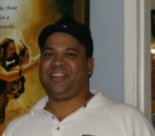
But the reach and impact that video gaming and the social networking platform that these provide has also helped to rebrand these artists to the alternative radio audience “You can’t pick up a Guitar Hero or Rock Band game and not be exposed to a cross pollination of classic rock and new rock artists,” Daniel remarks. “Rock no longer has an ‘older folks like classic rock’ and younger folks like ‘new and alternative’ mentality. Radio programmers need to finds ways to not bash one or the other because there’s a good chance your listeners are diggin’ both.”
Shoot To Thrill
It is no coincidence then that both Metallica and AC/DC have their own video game while the Gunners “Shackler’s Revenge” was released via the Rock Band game prior to the release of Chinese Democracy. “AC/DC is a great example,” Columbia’s Guzik points out. “Our main campaign to engage alternative radio listeners involved creative contesting around the release of the AC/DC – Rock Band video game. We also rolled out a successful Internet campaign, called ‘Show Me Your AC/DC.’ We created a site to upload creative and public uses of the AC/DC logo to win a trip to a private show. The response was fantastic from alternative radio.
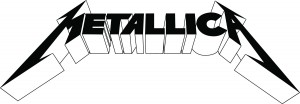
For Metallica, the campaign was quite similar. “When it comes to heritage artist it all depends on what, as a label, we are doing to continue to keep the artist relevant” says Goldklang, “Metallica recently had their highest chart position at alternative. ‘Mission Metallica’ was developed a year before Death Magnetic’s release, which helped bring old and new fans into the process. We had several different configurations to purchase the record, plus hours of footage, live shows, contests, old and new photos, even bringing fans into the writing process of the record. Throughout this were ties directly into radio as much as possible. It was massive and none of it would have been possible if we didn’t have a band and management company that understood their culture and knows the value of tying into radio.”

Chinese Democracy
Qualitative research has been able to provide a focused reflection from the core audience helping to define exactly where the line is, “The trick is to be as ‘mass appeal’ as possible while still pleasing the core,” Daniel says. “For us the core sound is ‘guitar driven rock.’ AC/DC is more widely received by our core than the Flobots, for example. Our ‘left of center’ is closer to center than that of L.A. or even Atlanta.”
 From the label perspective, Guzik says, “The online polls and research seem to suggest that the traditional format sound vs. substance argument is no longer applicable. In the end, a hit will stick and your auditorium tests years from now will say you should have played it all along.”
From the label perspective, Guzik says, “The online polls and research seem to suggest that the traditional format sound vs. substance argument is no longer applicable. In the end, a hit will stick and your auditorium tests years from now will say you should have played it all along.” The Judas Kiss
Cultural relevance also plays a major factor as well. “It’s all about continuing to stay relevant. Working with radio, continuing to deliver content whether you are on or off cycle” states the WB’s Goldklang. For bands like Metallica, working with radio to deliver exciting content is the key. From in-store appearances, to basement performances, radio festivals and a forthcoming video game, Metallica has always been a front-runner in pushing the band’s boundaries while delivering compelling content to their audience.
When asked what sets some heritage artists apart from others that get them played at alternative radio, WEND’s Daniel says, “I think it boils down to the popularity of the artists. Metallica is huge, where as other artists are much more niched and ultimately not right for the station.” KJEE’s Gutierrez adds, “For us, I think its personal taste. We feel that Metallica fits into the format nicely for the Santa Barbara audience.”
While many agree that the alternative format will remain centered in guitar driven music, Guzik believes there is a new perspective on the horizon, showing that cyclical nature of things still holds true – that what is old will be new again. “I actually think the format is slowly going to move way from the harder edge,” Guzik says. “There is an underbelly of new artists with keyboards, and female-fronted vocals that will change the game once again. And how nice will it be…. shows that actually have girls in the audience again.”

While heritage rock artists and hard rock itself can be seen as somewhat limited in range for alternative radio, its influence has been felt across many musical and demographic boundaries. But, in order to understand the present, one must have a good grasp of the past. As such, radio programmers and their audiences look to bands and artists from the past that provides a natural appeal to the audience seeking the alternative. In 1999, Morrissey helped to compliment Moby. In 2009, it becomes bands like AC/DC, Metallica and Guns N’ Roses to reflect the past that brought about Slipknot, Atreyu and Avenged Sevenfold.
And as the light turns green and the first notes of the soaring guitars pulsate through his car speakers, Dave ponders this axiom a little more and responds to the unstated question, and with a nod to himself, he answers silently – “works for me!” ^m^
Photograph credit: Jack Daniel, Rob Goldklang and Joe Guzik.
Paradise City
In recent years, as Alternative radio has skewed harder, artists traditionally regarded as heritage Active Rock artists have increasingly found a home at the format. Here’s a look at the songs by AC/DC, Guns N’ Roses and Metallica that have spent time on the Alternative chart since the beginning of 2000. All airplay data is complied from Broadcast Data Systems monitoring of terrestrial radio stations airplay across the country.
Monitored Radio Airplay
Artist/Title: Date: Peak:
AC/DC “Rock N Roll Train” 10/24/08 No. 25
Metallica “Cyanide” 3/13/09 No. 19
Metallica “The Day That Never Comes” 10/3/08 No. 5
Metallica “St. Anger” 6/6/03 No. 17
Metallica “I Disappear” 6/16/00 No. 11
Metallica “No Leaf Clover” 12/24/99 No. 18
Guns N’ Roses “Chinese Democracy” 11/14/08 No. 24
KJEE/Santa Barbara, CA – www.kjee.com
WEND/Charlotte, NC – www.1065.com
Columbia Records – www.columbiarecords.com
Geffen/Interscope – www.interscope.com
Warner Bros. – www.warnerbrosrecords.com
AC/DC
(www.acdc.com and www.acdcrocks.com)
Line-Up: Origin:
Brian Johnson – Vocals Melbourne, Australia
Angus Young – Lead Guitar
Malcolm Young – Rhythm Guitar
Cliff Williams – Bass
Black Ice – AC/DC’s seventh album over all, in a career that has spanned more than 35 years. It is the 10th album for Brian Johnson and the bands first release on Columbia Records.
Black Ice (Columbia, 2008)
Stiff Upper Lip
Ballbreaker
AC/DC Live
The Razor’s Edge
Blow Up Your Video
Fly On The Wall
Flick Of The Switch
For Those About To Rock We Salute You
Back In Black (Epic, 1980)
Highway To Hell (Epic, 1979)
Power Age (Epic, 1978)
If You Want Blood, You Got It (Epic, 1978)
Let There Be Rock (Epic, 1977)
High Voltage (Epic, 1976)
Dirty Deeds Done Dirt Cheap (Epic, 1976)
TNT (EMI, 1975)
’74 Jailbreak
Produced By:
Brendan O’Brien
Label:
Columbia
Line-Up: Origin:
Axl Rose – Vocals Los Angeles, CA
Ron “Bumblefoot” Thal – Guitar
Richard Fortes – Rhythm Guitar
Daren Jay “DJ” Ashba – Guitar
Tommy Stinson – Bass
Frank Ferrer – Drums
Dizzy Reed – Keys
Chinese Democracy – 15 years in the making, the long anticipated Chinese Democracy is Gun’s Roses 6th studio album and first release under the new band line-up.
Discography:
Chinese Democracy (Gefen/Interscope, 2008)
The Spaghetti Incident (Geffen, 1993)
Use Your Illusion I & II (Geffen, 1991)
Lies (Geffen, 1988)
Apetite For Destruction (Geffen, 1987)
Produced By:
Axl Rose & Caram Costanzo
Label:
Geffen/Interscope
Line-Up: Origin:
Kirk Hammett – Guitar San Francisco, CA
James Hetfield – Vocals & Guitar
Robert Trujillo – Bass
Lars Ulrich – Drums
About The Current CD:
Death Magnetic – is the 10th album by the bay-area rockers; showcasing seven-minute epics laced with piercing vocals, roaring guitar-riffs, deafening solos and booming double bass drums. It is the first album produced by Rick Rubin, who is Holy Grail for heritage artists looking to reconnect with their early sounds.
Discography:
Death Magnetic (Elektra, 2008)
St. Anger (Elektra, 2003)
S&M (Elektra, 1999)
Reload (Elektra, 1997)
Load (Elektra, 1996)
Metallica (Elektra, 1991)
Master Of Puppets (Elektra, 1986)
Ride The Lightning (Elektra, 1984)
Kill ‘Em All (Elektra, 1983)
Produced By:
Rick Rubin
Label:
Warner Bros
© March 1, 2009. Michael D. Vogel. All Rights Reserved. This originally appeared on the Vogelism blog at https://www.vogelism.com, authored by Michael D. Vogel. This article may be shared or reprinted as long as this entire copyright message, including the source location of this article, accompanies it.







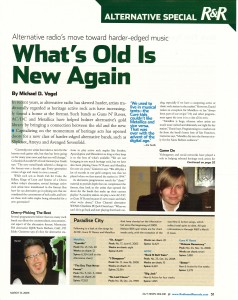
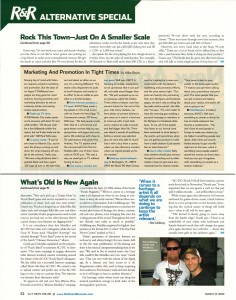

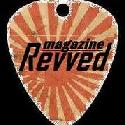
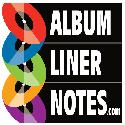
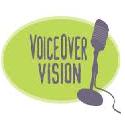

 Welcome to Michael D. Vogel’s online portfolio. I am a Los Angeles-based music journalist/content creator, and self-professed music-fanatic/radio-aholic. With more than 20 years of experience in multiple facets of the music industry including; music programming/air talent for terrestrial and internet radio as well as record label artist promotion, I have a finger on the pulse of what's new and under the radar in the emerging music scene. Areas of specific expertise include, but not limited to: rock (heritage, mainstream, heavy metal/hard rock and alternative), pop and adult contemporary, as well as radio, pop culture, sports, exercise and politics. I am applying my passion for music as a freelance writer for the Examiner as National Music Examiner (Examiner.com) in addition to West Coast Editor for FreeGotham (FreeGotham.com). Find me at michael@vogelism.com.
Welcome to Michael D. Vogel’s online portfolio. I am a Los Angeles-based music journalist/content creator, and self-professed music-fanatic/radio-aholic. With more than 20 years of experience in multiple facets of the music industry including; music programming/air talent for terrestrial and internet radio as well as record label artist promotion, I have a finger on the pulse of what's new and under the radar in the emerging music scene. Areas of specific expertise include, but not limited to: rock (heritage, mainstream, heavy metal/hard rock and alternative), pop and adult contemporary, as well as radio, pop culture, sports, exercise and politics. I am applying my passion for music as a freelance writer for the Examiner as National Music Examiner (Examiner.com) in addition to West Coast Editor for FreeGotham (FreeGotham.com). Find me at michael@vogelism.com. 